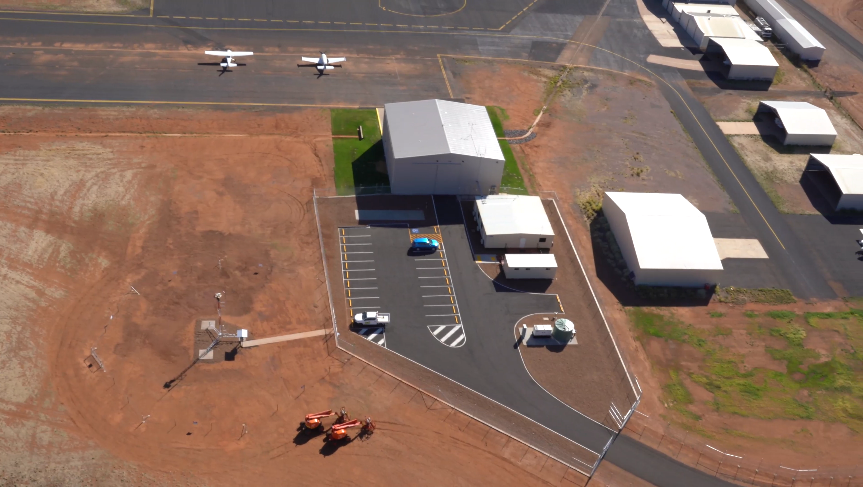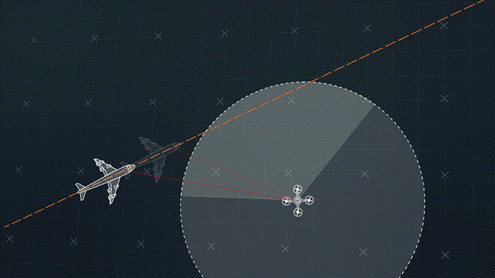Detect and Avoid flight trials at the Queensland Flight Test Range
By Tara Roberson, Trust Activities Coordinator
Trusted Autonomous Systems, Revolution Aerospace, and QinetiQ conducted a series of live flight trials at the Queensland Flight Test Range in Cloncurry during December 2022.
The flight trials showcased a Detect and Avoid (DAA) system developed by Queensland SME Revolution Aerospace and demonstrated how crewed aircraft can be detected by a DAA system – allowing remotely piloted aircraft to manoeuvre to a safe position.
The trials were developed as part of a Trusted Autonomous Systems initiative which will produce a DAA guideline – a suite of documents that will provide a critical stepping stone to enable Remotely Piloted Autonomous Systems (RPAS) developers to design and build DAA systems with a regulatory-aligned safety assurance process.
The collaboration aims to support acceleration of Beyond Visual Line of Sight flight for RPAS in Australia.

Aerial photo of the Queensland Flight Test Range, taken by Cloncurry Mustering Company.
Why was this important?
Australia was the first country in the world to regulate drones and remains on the forefront of the future of drone regulation.
With applications for RPAS continuing to emerge, our airspace will become busier. Detect and Avoid systems will be a vital part of how we maintain and enhance safety for everyone involved.
The December trial aimed to test a Detect and Avoid system – which provides an equivalent capability for RPAS – developed by Revolution Aerospace as part of the TAS Detect and Avoid guideline project.

Illustration of a drone detecting a crewed plane through a Detect and Avoid system. Visual created for TAS Ethics of RAS-AI video series
What happened at the flight trials?
At the Queensland Flight Test Range, Revolution Aerospace and QinetiQ worked with local aviation companies Cloncurry Mustering Company (CMC) and Savannah Aviation to conduct real-time activities.
They conducted manoeuvres with RPAS and crewed aircraft – including head-to-head (crewed aircraft approaching the system from the front) and side-on (crewed aircraft approaching the system from the side) – to test Revolution Aerospace’s Detect and Avoid system. The Queensland Flight Test Range provided the test and evaluation space for the trials to be conducted in a safe and controlled manner.
Encounters were largely successful in demonstrating the capability of the system and procedures. A demonstration day at the conclusion of the trials showed the capabilities of the system to delegates from the Queensland Government, Defence Aviation Safety Authority (DASA), and Cloncurry Shire Council.
Assurance of Autonomy Activity
This work forms part of Trusted Autonomous Systems’ Assurance of Autonomy Activity. Trusted Autonomous Systems (TAS) is working to support the growing Australian autonomous systems ecosystem by identifying and addressing key hurdles in the assurance and accreditation frameworks for autonomous systems and connecting stakeholders to broaden understanding of issues and effect meaningful change.
The TAS Assurance Activity provides expertise to regulators, government, and Defence and builds bespoke assurance and accreditation approaches for the Australian operational context to enable the integration of autonomous systems. These bespoke approaches aim to help industry access higher risk operational areas and achieve increase operational flexibility while maintaining safe performance and meeting regulatory requirements.
This work received funding support from the Queensland Government through Trusted Autonomous Systems (TAS), a Defence Cooperative Research Centre funded through the Commonwealth Next Generation Technologies Fund and the Queensland Government.
